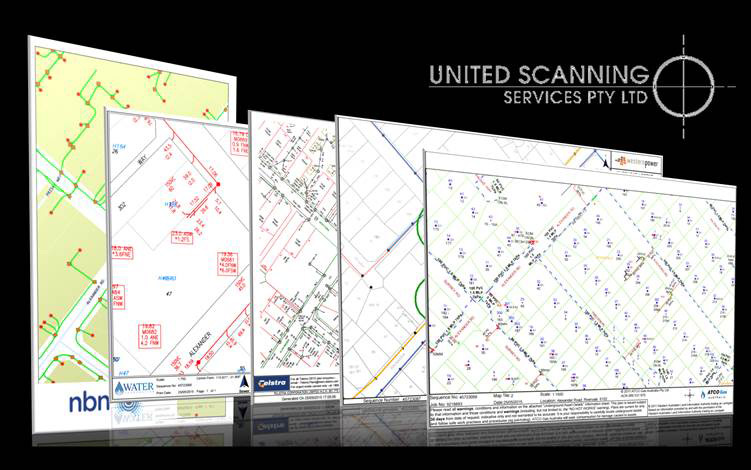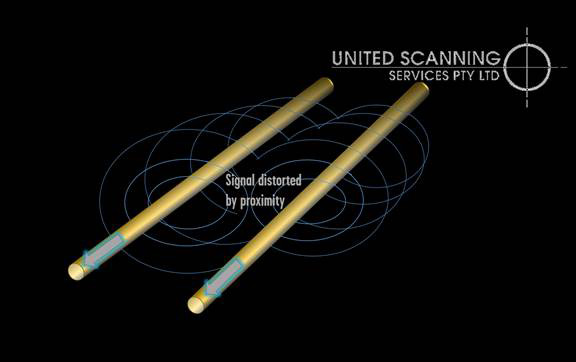A Few Complexities to Cable Locating
At United Scanning, we have a team who have been performing line locating, cable locating and underground pipe and service locating for leading Perth businesses for years. The team understand the challenges that can be faced in even an apparently simple cable locate job here.
Australia is almost unique in that it has a centralised repository of information about underground services. To the best of our knowledge, no other country currently possess a body like Dial Before You Dig here. Within Canada, each province operates its own management and tracking of underground services, called Click Before You Dig. The US has single phone number that attempts to unify 71 different bodies that track installed underground services. Only here can one source provide information about what has been installed underground.
Yet, as every single one of our experienced technicians tell clients every day, the maps of services provided by Dial Before You Dig are at best a guide. A good guide often, but still only a guide. They provide an approximate location for most services in a particular area, but are rarely precise and are rarely accurate to within the metre.

Figure 1: Dial Before You Dig maps
Furthermore, not a week would pass without one of our technicians returning to base with a report of a critical service that they located that was not on any Dial Before You Dig plan, map or schematic. Our technicians know that when they are tasked with clearing a site for excavation or trenching or any other destructive works, they are not just tracing the services their client knows are present. They are also looking for the gotcha pipes, cables and lines that no one knew were even passing through the site.
Another challenge our technicians must regularly overcome is that of congestion. Cable locating relies (mostly. More on this later) on the radio frequency signal that is produced when an AC current flows down a conductive conduit like a metallic pipe, cable or line. A quirk of the way that an electrical current moves is that it will follow the path of least resistance and that this can lead to unexpected outcomes. In a site that is congested with many parallel and crossing lines, cables and pipes, it’s not uncommon for current to also flow through the soil to another nearby service or services and cause it too to produce a radio frequency signal. Because both signals are produced by an AC current produced by the same source oscillating at the same rate, they will both produce radio frequency signals that will look very similar. For a less experienced technician standing above ground and seeking the point where the signal originates from, this can be confusing as the two signals interact, producing a distorted picture of the location of the target service.

Figure 2: Signal distortion due to congestion
Another common difficulty faced by those new to this field is where a cable or line or pipe is poorly insulated. Where insulation is lacking, the current can bleed into the surround soil. The longer the uninsulated area, the more current can bleed into the soil and the less current flowing down the service. As the current is reduced, the radio frequency signal generated by the reduced current is also reduced, making detection more and more challenging. The moistness of the soil can also significantly affect its conductivity, allowing more or less current to bleed into the soil and back to the transmitter.
Breaks and insulated joints in the service can also make locating the service very difficult. This is particular true where United Scanning are locating a service like a pipe, that while conductive, was never intended to be used as a conductor. Such services often have insulated joints, or joins that have been glued together or bonded together with plastic, thus insulating them.
Even more challenging for the unexperienced is how to deal with locating a line or pipe that has been confirmed as present but does not seem to be conductive at all. A limitation of a line locating strategy that relies solely on electro-magnetic (EM) detection is that EM detection cannot locate non-conductive lines, cables or services. Any service through which an AC current cannot and does not flow cannot be detected using this mechanism. Locating services made of plastic, terracotta, concrete, glass or any other non-conductive substance cannot be done using EM detection.
Finally, depth can be a real issue for untested newcomers to Utility location. Cable locating often relies on Electro-Magnetic detection, where the technician uses a piece of technology to detect radio frequency signals produced by the cable or line when an AC signal passes down its length. These waves radiate out from the service, like ripples from a stone dropped in a still pond. If the pond into which the stone is dropped is small, the ripples will easily be detected at any of the sides. Drop the same stone in the middle of an Olympic sized swimming pool and the ripples may be undetectable by the time they reach the edges.
A similar issue affects services that are buried very deeply. As the radio frequency signal travels through the soil towards the technicians standing above, it loses strength, requiring greater and greater sensitivity to be detected and become more and more prone to being drowned out by the ambient radio frequency noise on site.
While by no means a comprehensive list of the challenges involved in cable locating and line and pipe location, this does highlight why the experienced United Scanning technicians add real value. They have experience dealing with each of these issues. Our technicians are not one trick ponies, but arrive on site, armed by United Scanning with an array of tools. Dial Before You Dig maps are checked using state of the art EM detection tools, and when EM detection tools fail they turn to Ground Penetrating Radar (like Xray for the ground). They know the effect that frequency selection has on the ability to detect a given line or pipe, using the lowest possible frequency that will travel the length of the service. Where other approaches fail, they utilise common sense, intuition and a dose of creativity to answer the questions asked of them by United Scanning’s clients.
United Scanning may make look cable locating look simple, but this is the mark of their experience, their use of advanced technologies and the common sense and intelligence they take pride in bringing to bear for every client and on every job.
